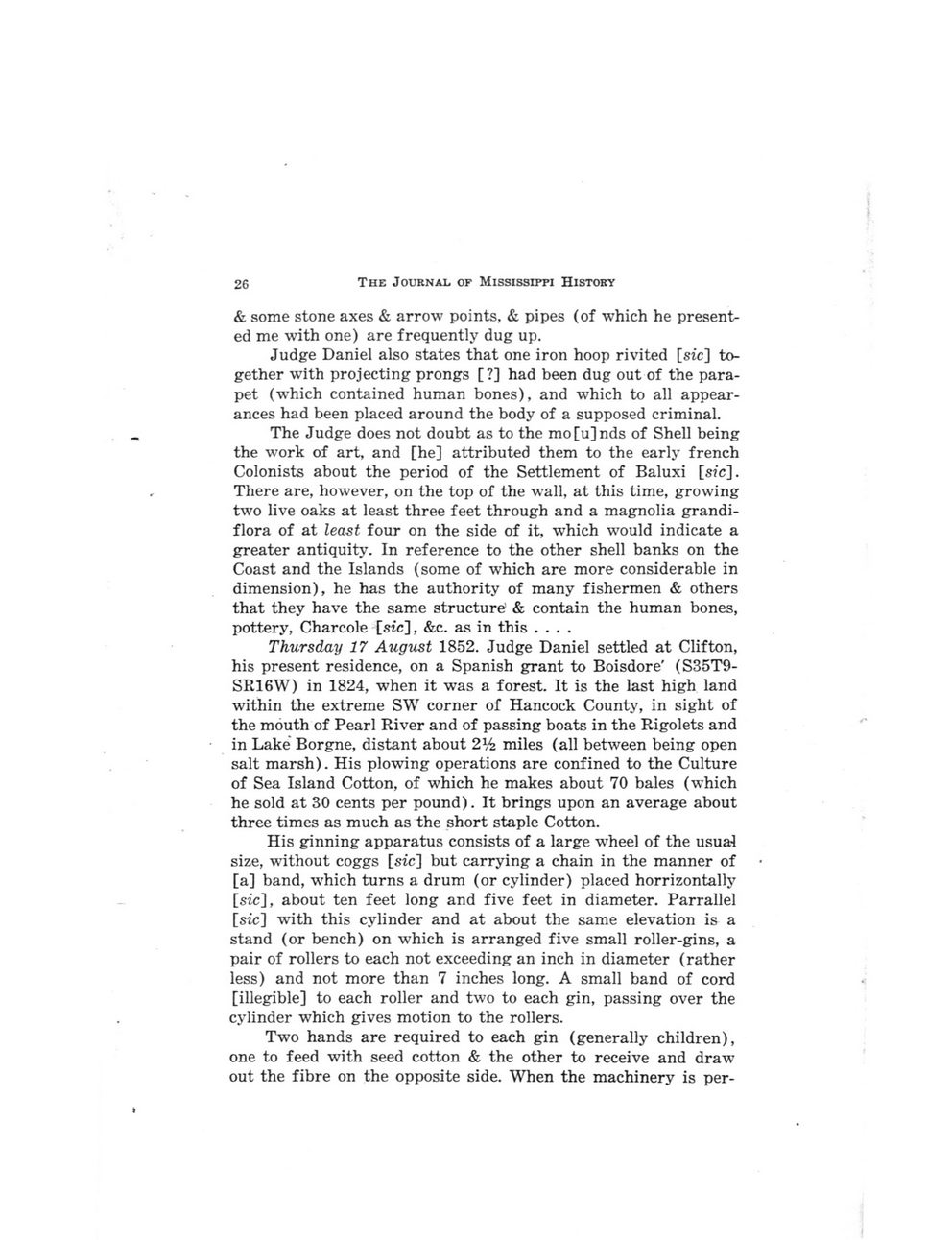This text was obtained via automated optical character recognition.
It has not been edited and may therefore contain several errors.
26 The Journal of Mississippi History & some stone axes & arrow points, & pipes (of which he presented me with one) are frequently dug up. Judge Daniel also states that one iron hoop rivited [sic] together with projecting prongs [?] had been dug out of the parapet (which contained human bones), and which to all appearances had been placed around the body of a supposed criminal. The Judge does not doubt as to the mo[u]nds of Shell being the work of art, and [he] attributed them to the early french Colonists about the period of the Settlement of Baluxi [sic]. There are, however, on the top of the wall, at this time, growing two live oaks at least three feet through and a magnolia grandi-flora of at least four on the side of it, which would indicate a greater antiquity. In reference to the other shell banks on the Coast and the Islands (some of which are more considerable in dimension), he has the authority of many fishermen & others that they have the same structure1 & contain the human bones, pottery, Charcole [sic], &c. as in this .... Thursday 17 August 1852. Judge Daniel settled at Clifton, his present residence, on a Spanish grant to Boisdore' (S35T9-SR16W) in 1824, when it was a forest. It is the last high land within the extreme SW corner of Hancock County, in sight of the mouth of Pearl River and of passing boats in the Rigolets and in Lake Borgne, distant about 2Vz miles (all between being open salt marsh). His plowing operations are confined to the Culture of Sea Island Cotton, of which he makes about 70 bales (which he sold at 30 cents per pound). It brings upon an average about three times as much as the short staple Cotton. His ginning apparatus consists of a large wheel of the usual size, without coggs [sic] but carrying a chain in the manner of [a] band, which turns a drum (or cylinder) placed horrizontally [sic], about ten feet long and five feet in diameter. Parrallel [sic] with this cylinder and at about the same elevation is a stand (or bench) on which is arranged five small roller-gins, a pair of rollers to each not exceeding an inch in diameter (rather less) and not more than 7 inches long. A small band of cord [illegible] to each roller and two to each gin, passing over the cylinder which gives motion to the rollers. Two hands are required to each gin (generally children), one to feed with seed cotton & the other to receive and draw out the fibre on the opposite side. When the machinery is per-

Claiborne, J.F.H Claiborne-J.F.H-066